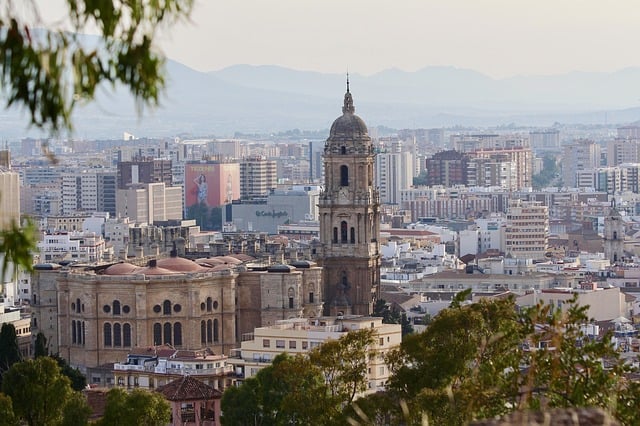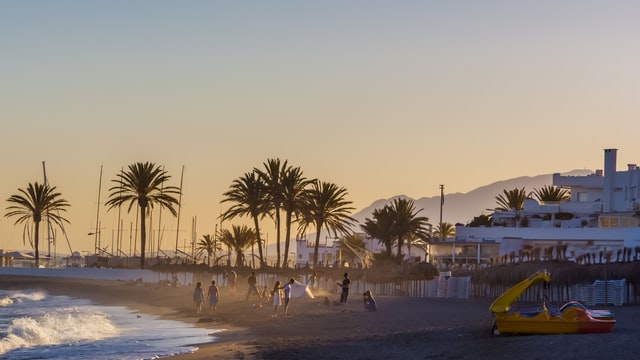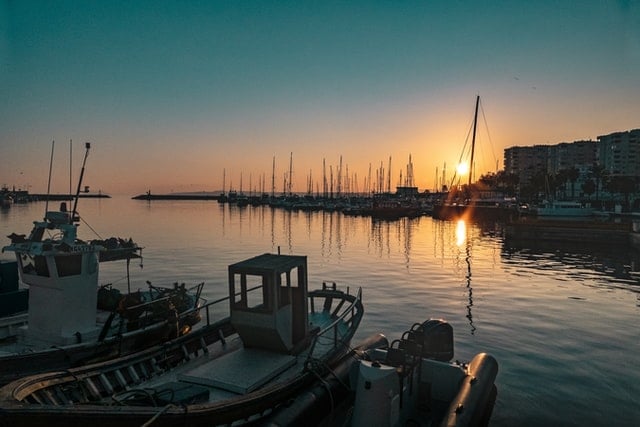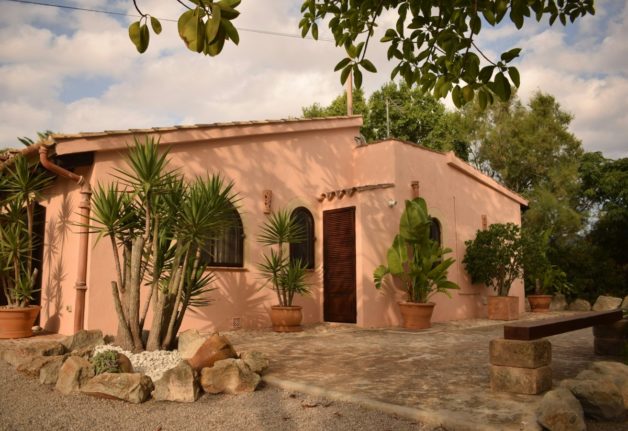This time last year, Spain was just emerging from a 7-week total lockdown, and the real estate sector had come to a halt. Fast-forward three quarters, however, and the scenario is in complete contrast.
Property sales in both Malaga city and the Costa del Sol were buoyant in the first quarter of the year. And prices are on the up in the area. In this Costa del Sol Property Market Review Q1 – 2021, we look at the figures in detail and analyse what they could forecast for the rest of 2021.
The figures and the lifting of travel restrictions into Spain lead analysts to predict that “a quick recovery” is on the horizon.
Property sales are going up
The first three months of the year registered a busy quarter on the Costa del Sol. According to the Registrars Association (Colegio de Registradores) report for Q1, 7,208 properties exchanged hands in the area between January and March.
This represents a 14.4 percent rise on the previous quarter. The resale sector saw particularly brisk activity. The type of transactions soared by 18.3 percent.
Yearly figures aren’t quite so positive. Sales fell by 18.1 percent between April 2020 and March 2021, although the decrease wasn’t as high as some analysts expected given national and international travel restrictions. However, there was much better news for new-build properties – sales skyrocketed by 26.2 percent in the year.
Lots of property sold
The Costa del Sol has some of the busiest sales activity in Spain, posting some of the best national sales figures in Q1 this year. In terms of total sales, 23,518 property transactions took place, the fifth-highest figure in Spain.
Sales of new-build properties reached 6,319 in Q1, the third-highest in Spain (behind just Madrid and Barcelona). The figure represents a rise of 26.2 percent in a year.
Sale figures are starting to show pent-up demand, which will only increase as Spain relaxes its travel restrictions from June onwards.
Figures point to both Malaga city and Costa del Sol property markets experiencing a quick recovery as soon as the health situation is back to normal.
Costa del Sol property prices are on the move up
Spain publishes no official selling price statistics – most of those available are based on valuations or asking prices on online portals.
However, a look at some of the country’s valuation sources gives a useful overview of the situation. It also shows that the general trend for prices on the Costa del Sol is up.
Registrars’ Association (based on declared prices in title deeds): The average price reached €2,010 per square metre in Q1, which translates to an increase of 0.9 percent on Q4 2020 and 3.9 percent in the year.
Tinsa (based on valuations): Prices rose by 0.3 percent in the year to reach an average of €1,688 per square metre.
Gesvalt (based on valuations): Costa del Sol property went up by 3.6 percent in the quarter, the highest rise in Spain, to reach €2,019 per square metre. The increase was the fifth-highest average price in the country and ahead of Barcelona province.
Sociedad de Tasación (based on valuations): The Costa del Sol saw a price rise of almost 2 percent, the highest on Spain’s Mediterranean coast. Properties averaged €1,755 per square metre.
Fotocasa (based on asking prices): The property portal reported that prices for property in Spain generally reversed their downward trend in November and have since climbed every month. In Q1, those for the Costa del Sol went up by 1.4 percent.
 Malaga property has seen the highest yearly increase in Andalusia. Photo: Barbara Iandolo/Pixabay
Malaga property has seen the highest yearly increase in Andalusia. Photo: Barbara Iandolo/Pixabay
Malaga city sees biggest price rise
Malaga city appears to have taken the lead in price rises for Costa del Sol property this year, a position usually held by Marbella and Estepona. According to the Registrars Association, the city saw a year-on-year price hike of 13.6 percent in Q1 with the average square metre coming in at €2,190.
Tinsa reported that Malaga property saw the highest yearly increase in Andalusia, 5.1 percent in Q1.
Outside the capital, prices rose too. Figures published by Idealista and based on asking prices show that the Costa del Sol saw an increase of 3.9 percent in the year to April. This figure was considerably higher in several areas:
Benahavís– prices leapt by 11.6 percent to reach €3,404 per square metre.
Estepona– the increase was 6.3 percent to €2,348 per square metre.
Marbella– prices saw a more sedate rise (4.1 percent) to €3,156 per square metre.
Sotogrande– property went up by 4.3 percent to €2,384 per square metre.
Bottom line? After months of a downward trend, Costa del Sol prices have returned to an upward trajectory.
The Costa del Sol’s excellent climate, location and quality of life makes it compatible with the rise in remote working for Spanish buyers looking for gardens and terraces. And for the foreign investor as a second home destination. Malaga on the starting blocks, Tinsa 11 May 2021
New build properties in Sotogrande and Estepona
New-build sales increased their share of the market in Q1. According to the Registrars Association quarterly review, they represented 27 percent of the market in Q1, considerably more than the 15 percent and 10 percent seen in the two previous years.
Malaga city and the Costa del Sol currently have a buoyant new-build market. Tinsa figures show that the area issued 6.2 licences per 1,000 existing properties in 2020, almost double the national average (3.3).
Some 5,640 new builds should be completed this year in a total of 264 developments along the Costa del Sol. Malaga and Estepona take the lion’s share with 1,174 and 1,089 new homes, respectively. Mijas will see the third-highest number of completions with an expected total of 835.
The Costa del Sol has one of Spain’s largest markets for new builds, a situation that looks to remain steady in the immediate future.
Foreign demand for property
The Costa del Sol attracts many foreign buyers and non-Spanish buyers usually represent around 30 percent of the market. The British account for the majority, followed by French, German and Dutch buyers.
Q1 this year saw severe travel restrictions. Spain closed her borders to British nationals from late December until late May and many other European countries advised against foreign travel. These limitations meant that purchases of Costa del Sol property by foreigners were lower than usual.
However, the percentage (25.6 percent) was only 1.68 percent lower in the year. And the Costa del Sol registered the third-highest proportion of foreign buyers in Spain after the Costa Blanca and Tenerife.
Despite Brexit and travel restrictions, foreigners (investors and second-home buyers) can’t get enough of property on the Costa del Sol.
Purchasing a second or holiday home remains a significant motivation for prime property purchasers. In a boost to the sector, the increase in remote working means that owners will be spending more time in their second homes. What Buyers Want, Savills May 2021
 Marbella. Photo: Silviya Nenova/Unsplash
Marbella. Photo: Silviya Nenova/Unsplash
What’s in store for the rest of 2021?
As the figures in our Costa del Sol Property Market Review Q1 – 2021 , the Costa del Sol property market has started 2021 on excellent foundations. While sales and the number of foreign buyers have dropped, they remain strong.
This is particularly true for the new-build sector, currently, the main engine driving the market. New properties have surged in popularity among second-home buyers over the last 14 months, mainly because they offer more indoor and outdoor space than older properties. Having more room at home has become a priority for buyers the world over.
Prices too appear to have returned to an upward trend. However, there is a slight caveat – some analysts believe that resale property prices may continue to fluctuate down rather than up throughout the rest of the year. Much will depend on the vendor’s need to sell and the April figures from Idealista (based on vendors’ asking prices) certainly show that resale prices are not going down for the time being.
However, one factor is a given on the Costa del Sol despite the pandemic and travel restrictions – the area enjoys one of the finest climates in the world and has infrastructure and amenities to match. We, therefore, expect purchases of property in resorts such as Sotogrande and Estepona to climb steadily over the next few months reflecting pent-up demand.
As Tinsa said in early May, “figures point to both Malaga city and Costa del Sol property markets experiencing a quick recovery”.
This article has been written by The Property Agent , a real estate agency specialising in property on the Costa del Sol. If you are looking for property on the Costa del Sol you can contact them here HERE.



 Please whitelist us to continue reading.
Please whitelist us to continue reading.
Member comments